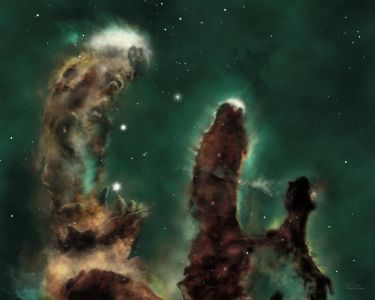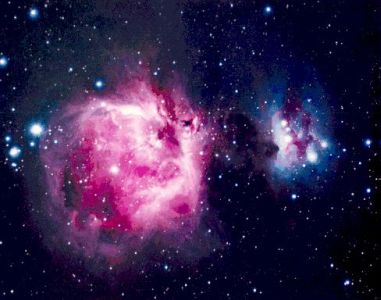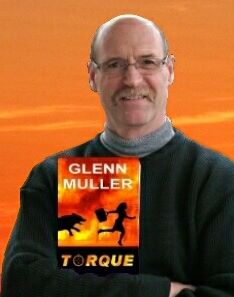Ideas Come From Stardust, A Guest Post From Author Glenn Muller
17 Monday Mar 2014
Written by susanfinlay
An author friend, Glenn Muller, is a guest on my blog today. He’s sharing an article about where his story ideas come from.
Ideas Come From Stardust by Glenn Muller
Every so often I’m asked how I come up with my stories. It’s a common question for writers and we each have our own explanations. I was thinking about this the other day, and it occurred to me that this process of forming something from nothing is much the same as how solar systems are formed. *Geek warning – you are about to get a lesson in astronomy.
In the vastness of Space there are giant dust clouds made up of little particles that you can think of as letters that will eventually form the words in your story. They just mill about waiting for a spark of an idea that, in this analogy, comes in the form of a supernova. A supernova occurs when a huge star, one much bigger than our sun, literally blows itself apart. To an author this is the “Aha!” moment that sets everything in motion.

[Pillars of Creation – photo credit NASA]
Although the exploding star blows off in all directions, some of that energy will blast into our dust cloud and start things moving. When particles get close enough their minute electrostatic energy attracts them to each other, and so your letters start forming into words. These small units continue to bond and become larger clumps (sentences), similar to the way dust bunnies form under your bed. When the dust bunnies get large enough to have some real mass they become embodied with a weak gravity and the clumping accelerates (paragraphs / chapters).
These clumps become the elements of a story, the snippets of ideas that float around in the cosmos of your mind until a plot forms to combine them into a cohesive thread. In Space, the movement started in the dust cloud by the supernova becomes more organized and everything starts to rotate around a common centre—much like soap suds circling a drain. Most of the material will gravitate to the middle and become compressed, eventually accumulating into a mass large enough to form a sun. You now have the central concept of your story.

[Star birth region in the Orion Nebula – Photo credit VLT}
Of course, when a solar system forms, the outlying material that isn’t drawn into the centre continues to clump into other large and small pieces. The larger pieces eventually become planets and the smaller ones moons and asteroids. You can think of these as the subplots and characters of your story. They are all bound together by your central theme but the gravity of each has also an effect on the others. And, when you want to shake things up, you can throw in a comet or two for good measure.
Some writers pull their ideas from “the ether” or “a fog”. Others have “a muse”. For me, everything comes from stardust. It’s a slow process in the beginning but once the “sun” ignites things really start to move. Having said that, despite my interest in the Cosmos, there really isn’t much astronomy in Torque. However, I did make sure that any mention of the Sun, Moon, or stars was correct according to the rise, set, and phase for the calendar date depicted in the book. A small detail, perhaps, but one that I feel is always important. My universe – my rules.
I’d like to thank Susan for letting me play in her Universe, once again. And to you for spending time with us. Feel free to share your own thoughts on the origins of inspiration. Susan and I would both like to know what they are.
Glenn Muller’s thriller, Torque, is available in paperback and e-book from Amazon.com and other major online retailers:
Amazon: http://www.amazon.com/Torque-ebook/dp/B00BC7OL2S/
Kobo: http://store.kobobooks.com/en-ca/books/Torque/
Like Torque on Facebook:
https://www.facebook.com/pages/Torque-by-Glenn-Muller/273615989414730
Follow Glenn on Twitter: @0GlennMuller


7 Comments
March 17, 2014 at 11:13 pm
Thanks Glenn for sharing your inspiration and how it develops into a story. People and life inspire me. Especially overcoming adversities. Sounds very general, I know! For my next book an article I read planted the seed for a theme I want to write about.
March 17, 2014 at 11:40 pm
Reblogged this on Christopher D. Abbott and commented:
Glenn Muller’s thoughts on inspiration, very inspiring!
March 18, 2014 at 11:50 am
At play in the universe. Very nice. Susan’s blog, Susan’s universe!
March 18, 2014 at 11:52 am
P.S. The photos are very nice, too. . . .
March 18, 2014 at 2:02 pm
Thanks everyone. It’s always a pleasure to spend time in Susan’s Universe 🙂
March 23, 2014 at 5:53 pm
Great post Glenn!
March 30, 2014 at 8:45 pm
Thanks, Julianne. Nice to know when people are reading it 🙂